Does your construction project disturb 1 or more acres of land through clearing, grading, excavating or stockpiling of fill material? Is there any possibility that stormwater could run off of your site?
I need permit coverage. Where do I start?
1. Read EPA’s Construction General Permit (CGP).
https://www3.epa.gov/npdes/pubs/cgp2012_finalpermit.pdf
2. Develop a stormwater pollution prevention plan (SWPPP) (see link above).
Basic SWPPP principles:
- divert stormwater away from disturbed or exposed areas of the construction site.
- install Best Management Practices (BMPs) to control erosion and sediment and manage stormwater.
- inspect the site regularly and properly maintain BMPs, especially after rainstorms.
- revise the SWPPP as site conditions change during construction and improve the SWPPP if BMPs are not effectively controlling erosion and sediment.
- minimize exposure of bare soils to precipitation to the extent practicable.
- keep the construction site clean by putting trash in trash cans, keeping storage bins covered, and sweeping up excess sediment on roads and other impervious surfaces.
3. Complete an endangered species determination for the project site. Your local U.S. Fish and Wildlife Service or National Marine Fisheries Service office can help you.
4. File a Notice of Intent (NOI): https://www.epa.gov/npdes/electronic-notice-intent-enoi
5. Implement all BMPs outlined in your SWPPP.
6. File an electronic Notice of Termination.
(excerpt from EPA’s “Does Your Construction Site Need a Stormwater Permit?”)
Stormwater and the Construction Industry
Even if you don’t need a Construction General Permit, there may be local regulations requiring erosion and sediment control on your site. Best management Practices (BMPs) are the key defense contractors and developers can use against erosion and sedimentation.
What is a BMP?
A BMP is a method used to prevent or control stormwater and the discharge of pollutants, including sediment, into local waterbodies. Silt fences, inlet protection, and site-stabilization techniques are examples of BMPs used on a construction site. Examples of BMPs can be found at many sources, including the Alaska Department of Environmental Conservation:
http://www.state.ak.us/dec/water/wnpspc/stormwater/stormwater.htm
and the EPA:
http://cfpub.epa.gov/npdes/stormwater/menuofbmps/con_site.cfm.
(excerpt from ACMP and NOAA brochure “So You Don’t Need a Construction General Permit — What You Can Do to Prevent Water Pollution”.)


